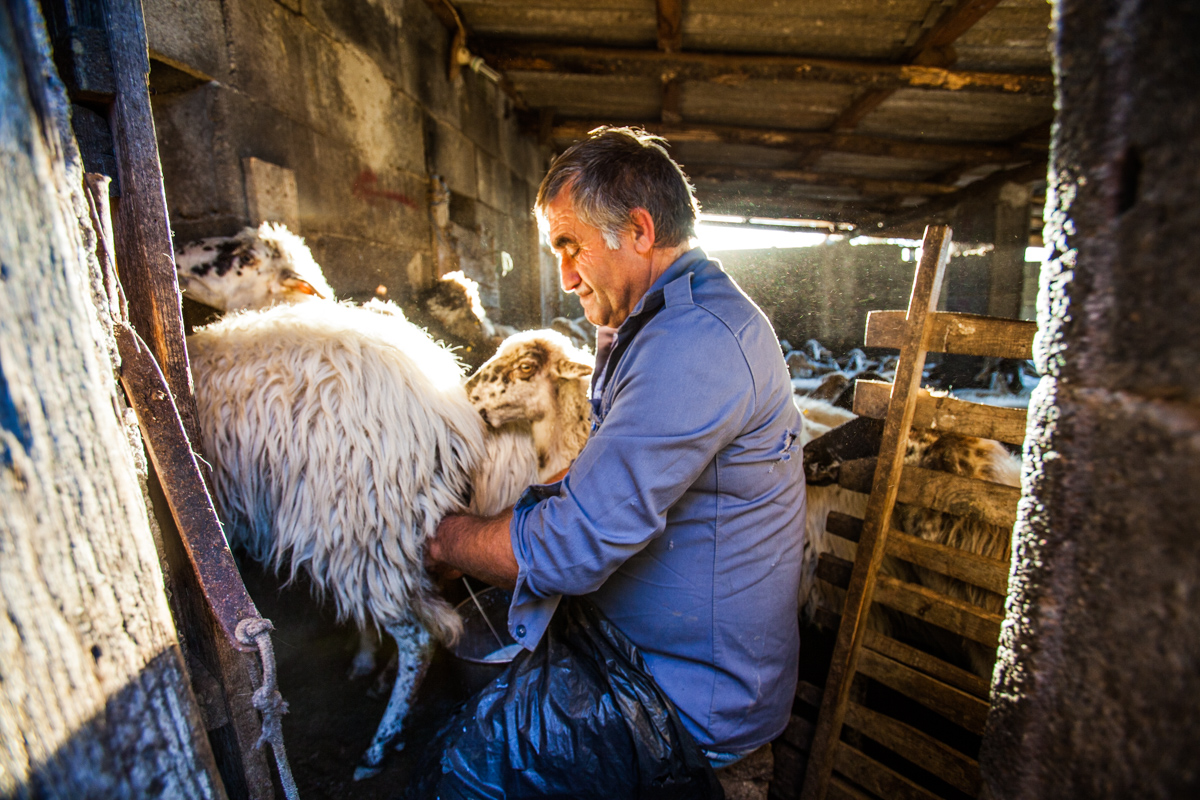Making Sheep’s Milk Ricotta
If you want to see a traditional process of making ricotta on a sheep farm in Sicily, you have to get up early. We set the alarm for 5:00am so we could meet our friend Nino Franco at the Blue Moon Cafe in Passopisciaro. We had a quick coffee and then set out for the Losi’s farm to make it on time to see the morning milking. Nino explained it was better if we all rode in his car because we were going to need four wheel drive. We hopped into his 1988 red Fiat, which had clearly seen its share of Nino’s adventures.
After a windy twenty-five minute drive, we arrived on steep hillside near the village of Roccella Valdemone. Salvatore Losi was just sitting down in the stone shelter to begin milking one of his sheep by hand as he does every day, twice a day. Warm morning light poured through the window opening behind Salvatore, while the building echoed with the soft, dissonant chorus of about 500 bleating sheep voices. Salvatore’s hands moved in a quick rhythm as he finished expertly squeezing the milk from the first sheep into a metal bucket underneath her. He gave the sheep a little shove through the narrow opening in the stone wall in front of him which led to a separate holding area. He grabbed the next closest sheep, moved her into position and began again. It was like a choreographed farmer/sheep dance where everyone knew their steps….milk, push, walk forward, next, milk, push, walk forward, next. Salvatore only pivoted slightly from his stone stool and made this all look easy, but if you’ve ever tried to milk a sheep (or cow, or goat) you know that it takes a tremendous amount of practice to get more than a dribble of milk from their udders, let alone aim it into the pail.

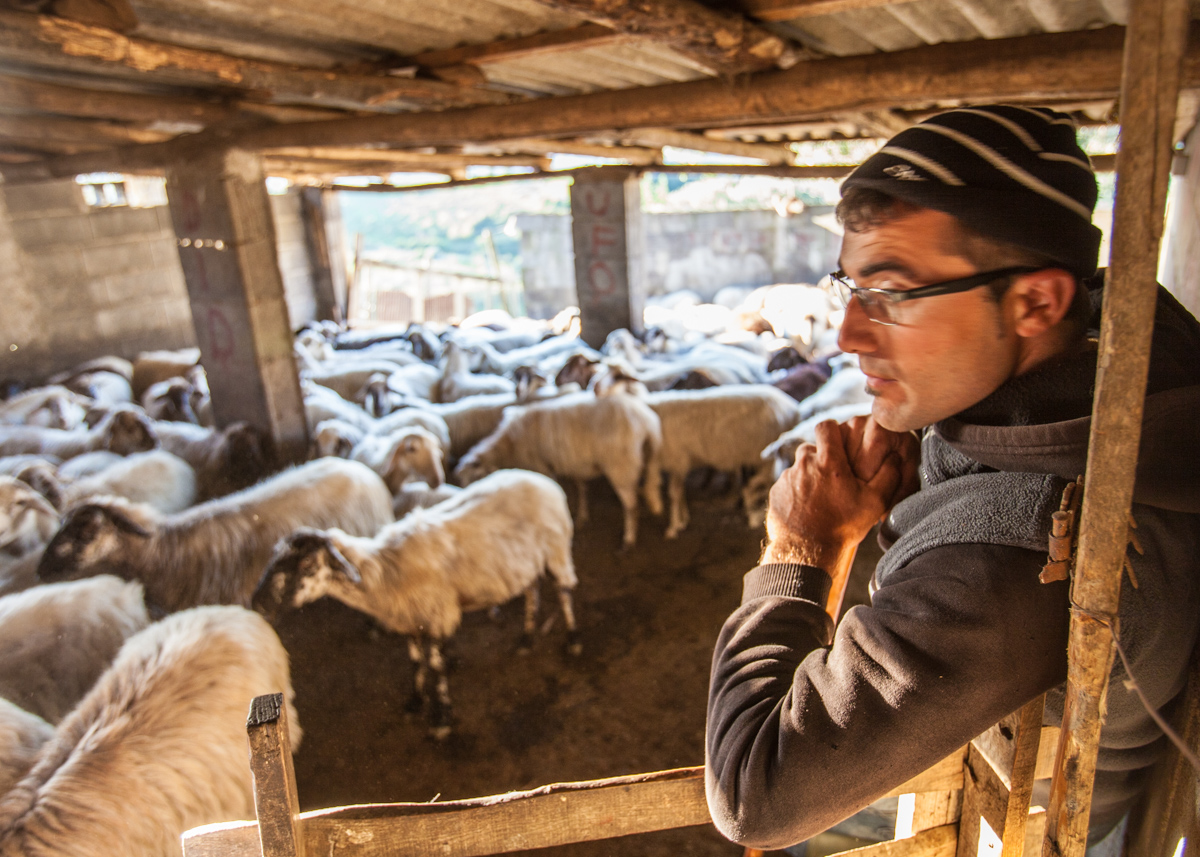
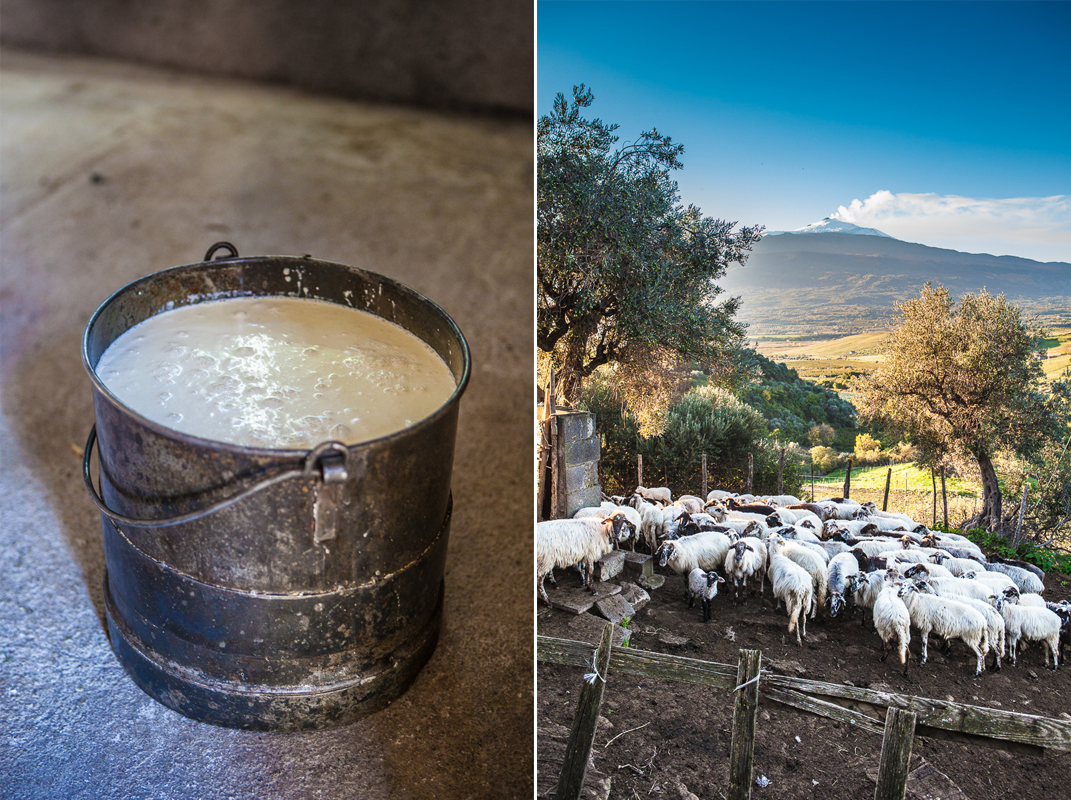
As Salvatore worked with the sheep, his uncle Carmelo stoked the wood fire in the cheese room next door, getting ready to make the day’s fresh ricotta, tuma and pecorino. The farm was passed down from Carmelo’s father and he now runs the operation with his son Antonio, his nephew Salvatore, and Salvatore’s son Marco. Carmelo explained that he learned everything about making sheep’s milk cheeses from his father, who began leaving him in charge of cheese making at eight or nine years old.
We entered the cheese room and watched as Carmelo poured the fresh milk into a heavy copper pot and lifted it into place above the fire with a chain hoist. As Carmelo began slowly agitating the milk with a large wooden stirring instrument made of chestnut, Nino explained that only all natural yeasts are used in their cheese making process. After a while the curds began to form and Carmelo kept stirring quickly, sometimes adding a bit of hot water on top of the milk to keep the whole batch warm from top to bottom. When the curds were sufficiently formed, they hoisted the copper pot back to the floor and Carmelo reached in with both hands up to his elbows to begin scooping out the cheese and plopping it into the forms sitting on the nearby stainless steel table. Next he sprinkled a layer of whole peppercorns on top of each cheese and then firmly pressed them down to remove excess water. This first batch of cheeses would become tuma.
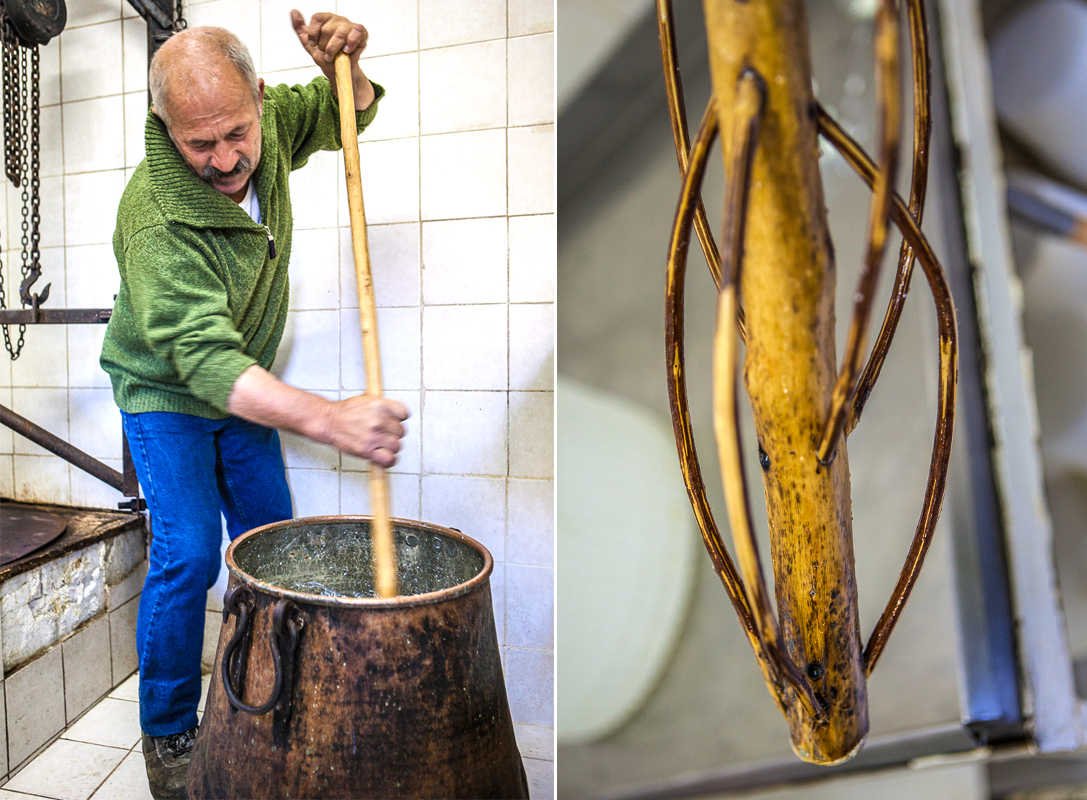
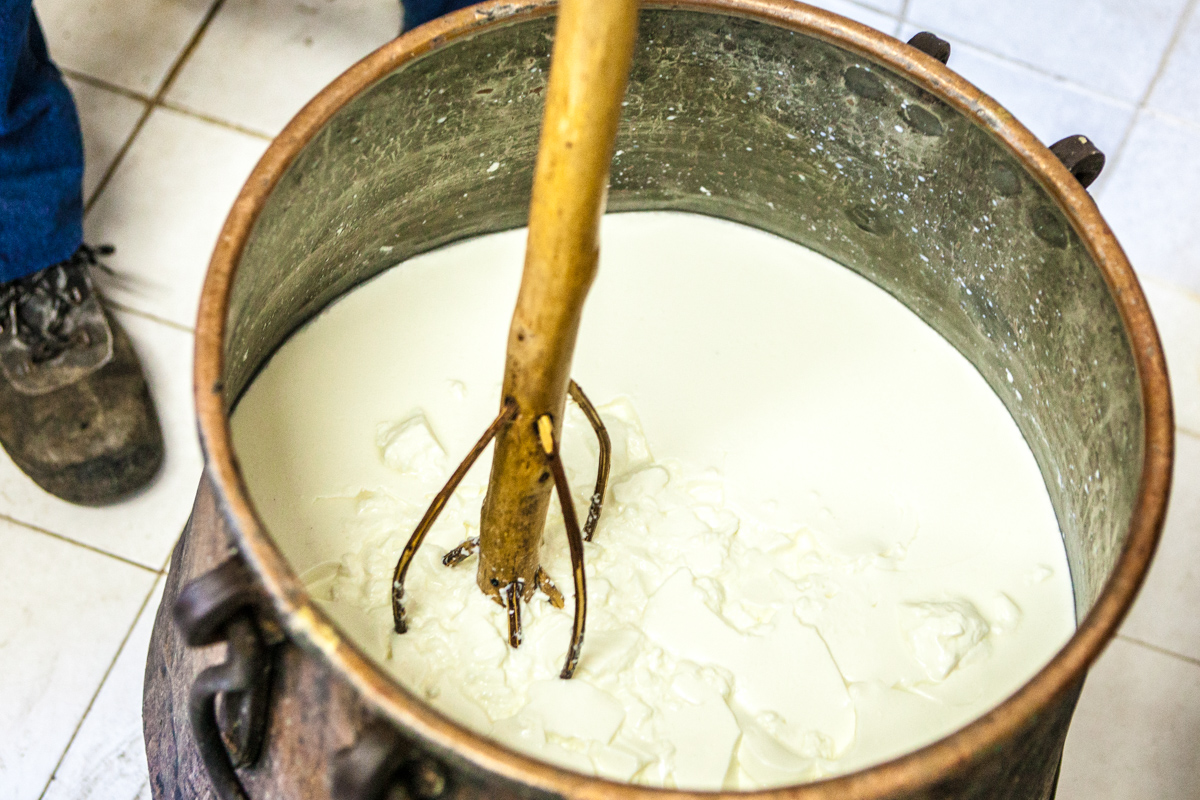

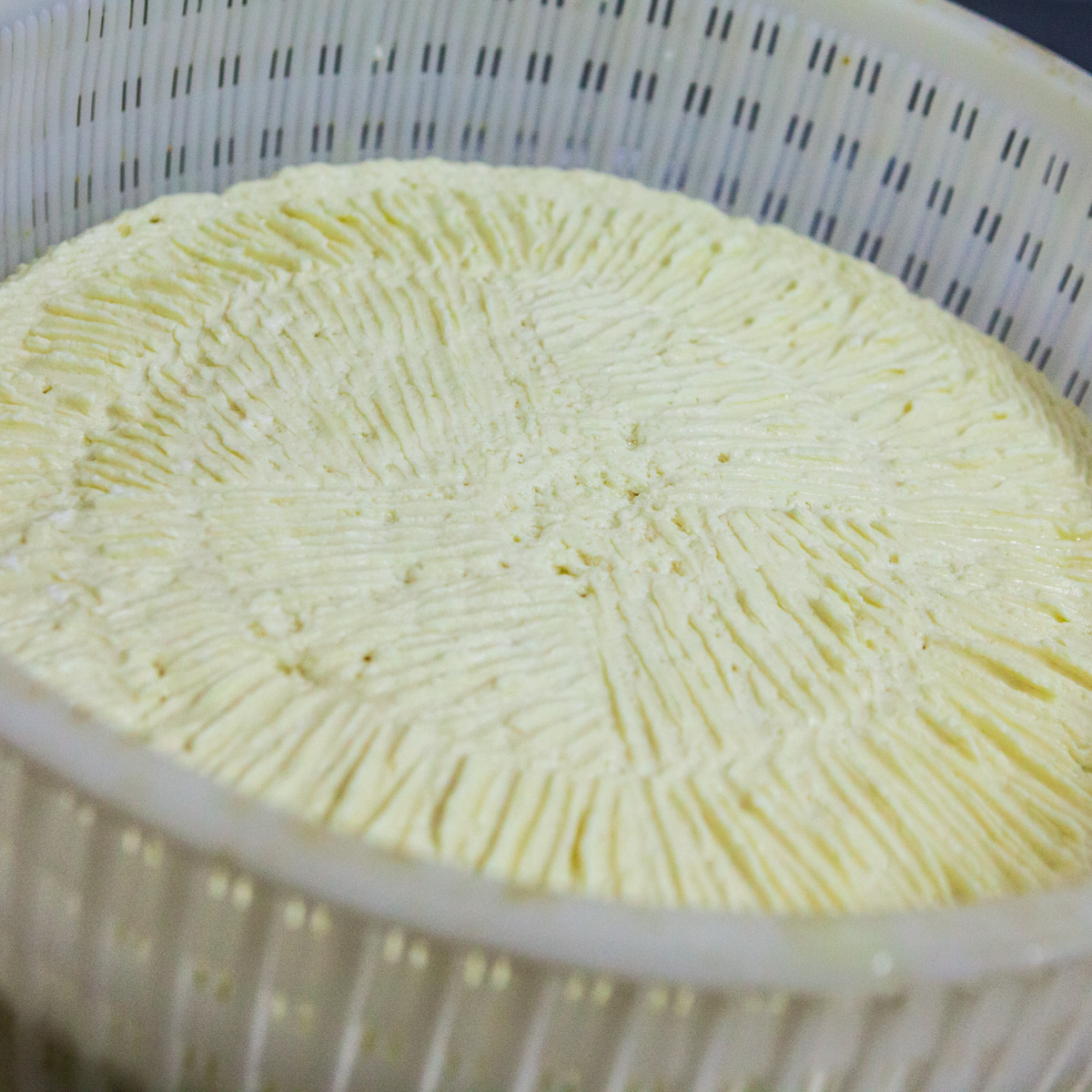
The whey that is left after the tuma goes back on the heat to become the day’s fresh ricotta. We moved outside and Nino explained that in this traditional process of cheese making, nothing is wasted. The first curds become tuma or are salted and aged to make pecorino. The whey becomes ricotta. The final whey from the ricotta goes to feed the pigs or lambs. What is cleaned out of the bottom of the copper pots at the end is food for the hardworking Maremmano sheep dogs (also known as Maremmas). While we talked, Salvatore grabbed a sapling from a fig tree, whipped out a knife and began making small cuts all along the length of the branch. Apparently there is something special about the way the fig branch interacts with the whey that helps the ricotta curds form. We returned to the cheese room and Carmelo began stirring again with the fig branch. “It’s like an art.”, Nino said, “because they have to listen while they stir. They learn to hear how the sounds change when the ricotta is becoming more solid, so they can remove it from the heat at just the right moment.
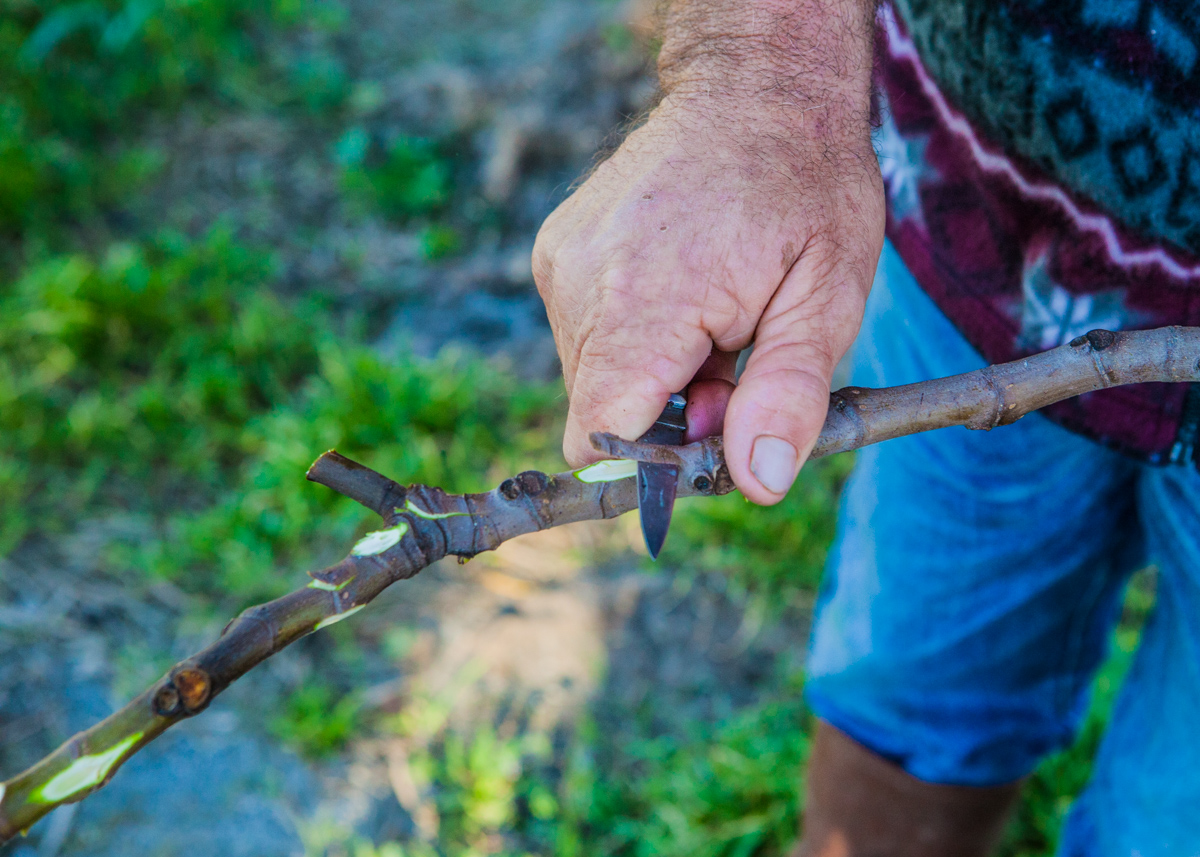
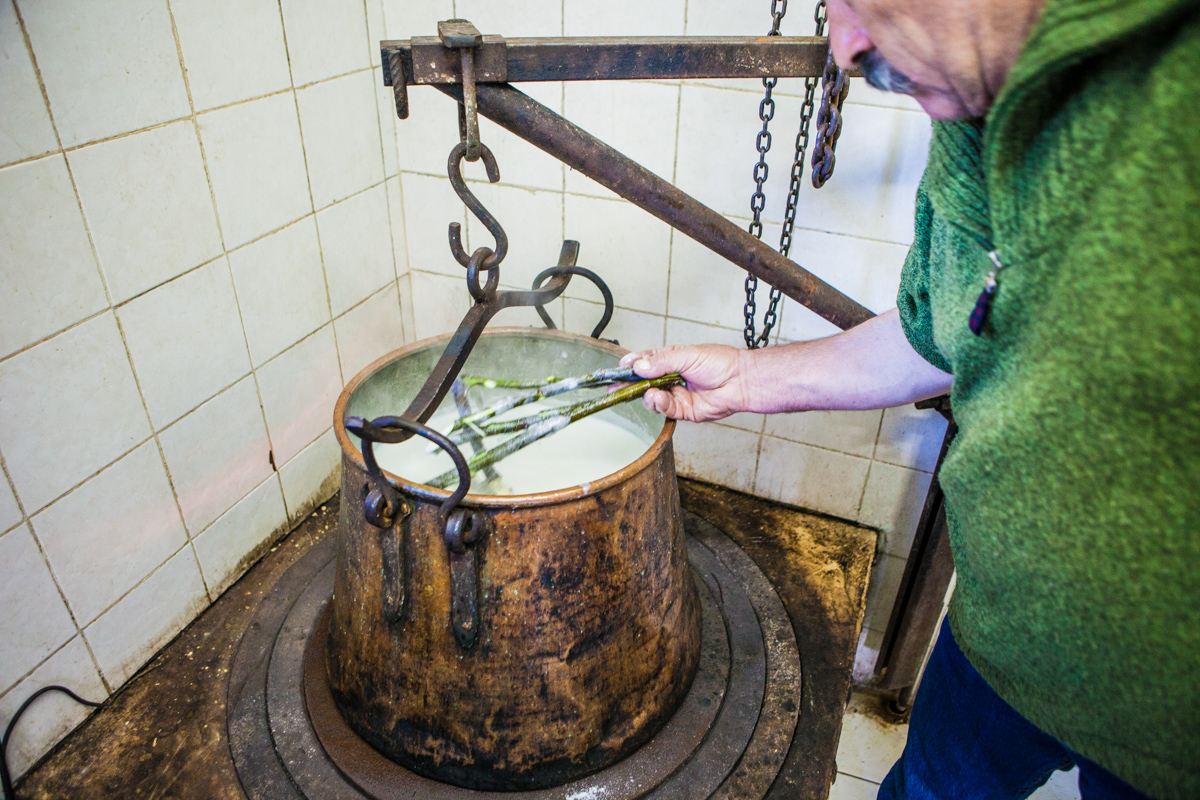

As that musical cheese moment arrived, Carmelo again moved the copper pot from the fire and scooped out the ricotta curds into their forms. Nino and Marco quickly gathered plates, spoons, fresh bread, and a giant ladle. They filled each plate with a mound of soft, warm ricotta, tore pieces of bread over the top, and handed us spoons. I’ve tasted fresh ricotta from the markets and formaggerias in Sicily, but this was a whole other level of cheese heaven. We stood slurping up this delicious breakfast and as Salvatore opened the pen so their flock could head down the mountain for the day of grazing. We watched as the sheep ran together along with their protectors, the Maremmano.
Salvatore explained that the sheep and dogs knew exactly where to go and could all travel alone to the fields across the ridge. The dogs live with the sheep, follow them, protect them, sleep with them. “These dogs are extremely intelligent animals.”, he said. “If they could speak, they would be smarter than most humans.”
As the warm ricotta and fresh bread hit my belly, I looked over the valley at the flock of sheep dotting the green hillside with hundreds of white flecks. The morning sun gave Mount Etna a warm glow in the distance. I took a deep breath and in that moment on the Losi Farm, everything seemed right with the world.



